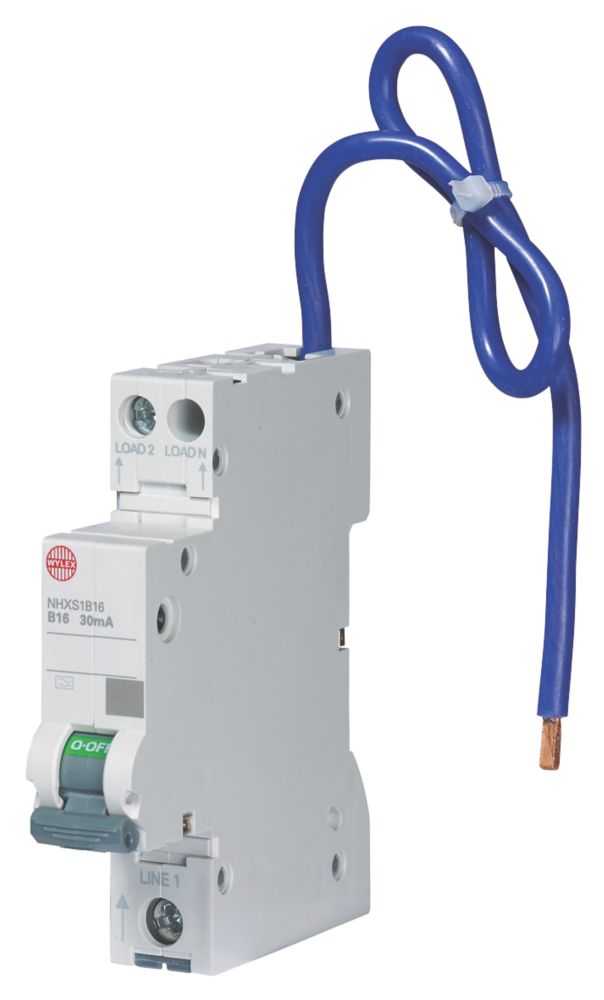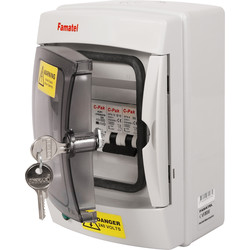Having run my world on a generator and even from our van with an inverter when were were building our previous house out in the wilds of wales here are a few thoughts.
In general but it is worth check with a meter, generators are not N/E bonded ( check between the N - bottom left of the socket and the E hole) they are floating neutral. Any rcd rcbo you shove on it will not work and is just pointless as there is no path between earth and neutral.
Wrong. There are many permutations - including floating output. Many have a centre tapped winding, which may mean 120-0-120V on a 240V output, or it may mean 55-0-165V or 55-0-55 on a 220/110V dual output machine. As you say, you need to check each generator to see how it's wired.
So does a generator need to be earthed ? If you are just running an extension lead and our powering only one class 1 device say a fridge - as you should, then no. Say the fridge gets a fault and the case goes live...
Wrong, the case will not "go live". The case will be connected to one side of a floating supply, and if there is an earth (even a parasitic one) then the "L" will go to earth and the "N" will become live. In itself, not dangerous as you go on to say :
nothing will happen, unless you touch the a neutral that is attached to the generator and complete the circuit.
If the fridge goes faulty even I am not mad enough to go fault finding without unplugging it
You might not know it's faulty ? It could still be working just fine, but with a L-E fault.
Grounding a generator can protect the generator but normally does nothing for your safety, mind you it does not increase your danger much either.
Once you go beyond running one supply and one device, then it does make a big difference to safety.
If the gen is n/e bonded then earthing the generator can be fatal
Wrong again. What could be fatal would be
NOT earthing a genny with a N-E link. See the above about a prospective L-E fault - and note that the "E" does not necessarily mean the supply E (think about, e.g., a chafed cable draped over a copper water pipe, or the cable got snagged on a sharp edge will dragging it across the garden). There is scope then for the L-E fault to make the genny N "live", and the N-E bond will then make the genny frame and anything connected to it (possibly including the fridge case) live.
...as an alternate path is created back to neutral in the case of a fault that causes a live condition, say the fridge pump fails and lives up the case, you touch the ground and the fridge and there is now a path back to neutral on the generator via the planet earth.
I'm struggling to understand this sentence

Don't ground a n/e bonded generator unless you go the whole hog.
Correct, any ground needs to be a decent one. However, if you have the right equipotential bonding in place, that isn't actually all that important. Don't forget that in a TN-C-S system, it's possible for the DNO provided "earth" to be anything up to 240V above local earth under certain fault conditions (mainly broken PEN (protective earth and neutral, also called CNE, combined neutral and earth) conductor). What makes it safe (at least inside the house) is equipotential bonding so that even if this happens, everything is at the same potential. This equipotential bonding needs to remain in place, and include the genny frame - but then we get into the same questions as for any "outside supply" where precautions need to be taken against someone touching "earthed" parts and the local earth.
Generators have added risk..take a few simple steps to minimize risk. Use a plug to blue commando socket on the generator and a commando to extension lead. Its always raining and its always dark and unplugging, a commando socket is inherently more safe that something with exposed pins, also its away from the generator and we all plop our hand on the gen as we bend down to unplug it...
Or, just stop it before connecting/disconnecting it !
Add another level of safety - bring in the feed via a commando socket on the outside of the house connected to a plug switched socket on the inside
More or less as already described, except the OP is planning on hardwiring the sockets all the way to the plug for the genny.
Or go the whole hog , get a transfer switch fitted - you must disconnect the mains from the generators completely to prevent back feeding the grid., use the Main earth terminal to bond everything to the same potential ( if you can use the suppliers earth, if not move the house to a TT earth.) and run the system through the main consumer unit.
No, you
CANNOT rely on the supplier's earth - the reason for the outage may be that someone has just dug up a cable and broken the PEN between your house and the nearest earth point. You do not have to go TT. It's now considered acceptable to connect your own earth electrode to the DNO earth, and at one point it was expected for the new version of BS7671 to require a local earth electrode on all installations. You do have to consider prospective fault currents in the local electrode and connecting cables, and size everything accordingly.
it is still not permitted to switch the earth connection - so you can't use the DNO's earth when on mains, and run as a TT system when running on genny as the required switch pole in the earth is forbidden (there is now an exception, which is for protection internal to an EV charging point).
Me personally I would not be running a fridge or freezer..just pop a few camping cool box packs in the freezer, if you don't open it they will keep the temp down for hours.
For short outages yes, depends on how long you expect the power to be off for. The longest I've personally experienced was 4 hours, but see above about the 2015 outage in Lancaster.
As an aside, several jobs ago I worked at a site which was at the end of a long overhead line system which (I got to see the network maps one time) appeared to go via every village on the peninsular. We had frequent power cuts which I found could be categorised into :
* Short ones, restored in under a minute. I assume down to automatic or manual remote breaker re-closure after a transient fault.
* 1 ½ hours - note 1:25 or 1:35, but 1:30 give or take a fairly small margin.
* Longer ones, infrequent, and of variable length - which I put down to more serious problems.
From an insider, I know that at the time the engineers on call had a target of 1:30 to restore supply needing manual intervention (e.g. visiting a substation to re-close a breaker). I strongly suspect that they would wait until the 1:30 was almost up even if (e.g.) they could have done it in just 60 minutes - taking longer would incur penalties, doing it quicker would allow management to use the "you did it faster so we're reducing the allowed time for future callouts". Hence why I saw little variation from 1:30 for that length of power cut.
And every time we had one of the longer cuts, manglement would ask about options for a generator - only to consider them (after the power is back) and decide they are all too expensive. The maintenance manager just kept the file to hand and gave them a copy of the same options and costs each time

Camping gas stove does for tea and a fry up.
Indeed. Or for us, we still have a gas hob.
On a 1200w inverter we run a combi boiler , 3x laptops, Internet router ( if its not a widespread outage that lasts days - our virgin media cabinet has battery backup and lasts at least 6 hours - longest power cut of last winter) 4 lights and a freesat tv..all for an energy budget of 760 watts.
That sounds about right - other than the local cabinet having battery backup. Our VDSL2 cabinets (aka FTTC) supposedly have batteries in them, but I do wonder how long they should last for, and whether they ever get replaced (if not, then after a few years they might not have much capacity left).
3kw or really 2.7 kw constantly is a lot of energy...even a fan oven these days only uses 0.87kw or 870w at max these days with an a rated oven.
As others have mentioned, that is demand averaged over time - most will have elements rated much higher than that, and so your supply needs to be rated for the higher figure. The other issue is that for things like fridges, the inrush current will be many times higher than running current - although I imagine modern inverter driven types have a much lesser peak demand.
For those without a gas hob or a camping stove, having a genny capable of boiling a kettle (not all are 3kW) is a definite plus point.
Alternatively, you might use a UPS, and only run the genny when the batteries are getting low - thus using a lot less fuel.





